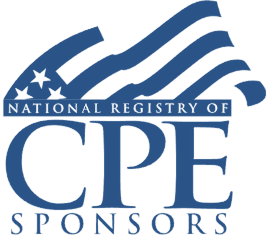Welcome! Save 30% on all CLE, CPE, and Professional Skills webinars, plus 15% off any annual pass with code CYBER2025
About the Course
Introduction
This course will identify the guidance within 2 CFR Part 200 and provide strategies and best practices to achieve the organization's costing goals. This session will provide practical, hands-on context to help you increase your direct and indirect cost recovery and manage your indirect costs rate. The panel will also describe the different rate development methodologies and allocation questions, discuss strategies for enhancing indirect costs recovery, and review other guidance to mitigate risk.
Description
Almost every nonprofit must engage in the process of negotiating federal indirect rates or developing a cost allocation plan to charge costs to awards (and sometimes both). Nonprofits face unique challenges in recovering indirect costs either through indirect rates or by directly allocating traditional indirect costs and recovering them as direct costs from awards. These challenges are driven by the various and unique types of awards that nonprofit organizations receive, which may require different allocation practices.
As non-profits go through this process, many often wonder if they have done everything within the constraints of federal regulations to maximize the organization's direct and indirect cost recovery. In this session, we will discuss strategies that may be employed to maximize direct and indirect cost recovery (with an emphasis on indirect), both through indirect rates and the direct allocation methodology. We will discuss some unique challenges with the various federal agencies negotiating rates with nonprofits and how you should prepare and review recent rate agreements to give you helpful tips.
Listen as this session explores rules and best practices for indirect cost rate recovery for nonprofits.
Presented By

Mr. Weekes has worked for more than 25 years serving clients receiving grants and contracts from federal agencies, helping in complying with related administrative regulations. Previously in his career, he was an auditor for the U.S. Defense Contract Audit Agency and worked in Ernst & Young's government contract services practice.
-
BARBRI is a NASBA CPE sponsor and this 110-minute webinar is accredited for 2.0 CPE credits.
Date + Time
- event
Wednesday, May 15, 2024
- schedule
1:00 p.m. ET./10:00 a.m. PT
- Establishing cost practices and policies
- Indirect cost methods
- Understanding different rate types
- Identifying allowable and unallowable costs
- Negotiating indirect cost rates
The panel will discuss these and other relevant topics:
- Treatment of fundraising and development costs
- Typical examples of direct and indirect costs and why it varies for NFP organizations
- Administration and negotiation of indirect rates
- Negotiation process
- Types of indirect cost rates and the pros and cons of each one
Learning Objectives
After completing this course, you will be able to:
- Identify indirect cost methods
- Discern between allowable and unallowable costs
- Understand different types of rates
- Recognize opportunities to negotiate indirect cost rates
- Field of Study: Accounting
- Level of Knowledge: Intermediate
- Advance Preparation: None
- Teaching Method: Seminar/Lecture
- Delivery Method: Group-Internet (via computer)
- Attendance Monitoring Method: Attendance is monitored electronically via a participant's PIN and through a series of attendance verification prompts displayed throughout the program
- Prerequisite: Three years+ business or public firm experience at mid-level within the organization, preparing complex tax forms and schedules; supervisory authority over other preparers/accountants. Specific knowledge and understanding of cost allocation principles; familiarity with government standards for nonprofit organizations receiving federal grant monies

BARBRI, Inc. is registered with the National Association of State Boards of Accountancy (NASBA) as a sponsor of continuing professional education on the National Registry of CPE Sponsors. State boards of Accountancy have final authority on the acceptance of individual courses for CPE Credits. Complaints regarding registered sponsons may be submitted to NASBA through its website: www.nasbaregistry.org.

BARBRI CE webinars-powered by Barbri-are backed by our 100% unconditional money-back guarantee: If you are not satisfied with any of our products, simply let us know and get a full refund. Contact us at 1-800-926-7926 .
Unlimited access to premium CLE courses:
- Annual access
- Available live and on-demand
- Best for attorneys and legal professionals
Unlimited access to premium CPE courses.:
- Annual access
- Available live and on-demand
- Best for CPAs and tax professionals
Unlimited access to premium CLE, CPE, Professional Skills and Practice-Ready courses.:
- Annual access
- Available live and on-demand
- Best for legal, accounting, and tax professionals
Unlimited access to Professional Skills and Practice-Ready courses:
- Annual access
- Available on-demand
- Best for new attorneys
Related Courses

Accounting for Income Taxes ASC 740: OBBBA Implications, Business Combinations, Valuation Allowances
Thursday, February 5, 2026
1:00 p.m. ET./10:00 a.m. PT

Form 990-PF: Meeting IRS Demands for Fiscal, Grant, and Other Data From Private Foundations
Friday, December 12, 2025
1:00 p.m. ET./10:00 a.m. PT

Impact of OBBBA and Recent Legislation on NPOs: Funding Cuts, Deductible Contribution Limits, New Scholarship Credit
Thursday, November 6, 2025
1:00 p.m. ET./10:00 a.m. PT

Identifying Lobbying and Political Activity for Nonprofits: Excluded and Allowed Activities
Thursday, December 4, 2025
1:00 p.m. ET./10:00 a.m. PT
Recommended Resources

Gain a Competitive Edge Through Efficient CPE Strategies
- Learning & Development
- Business & Professional Skills
- Career Advancement


